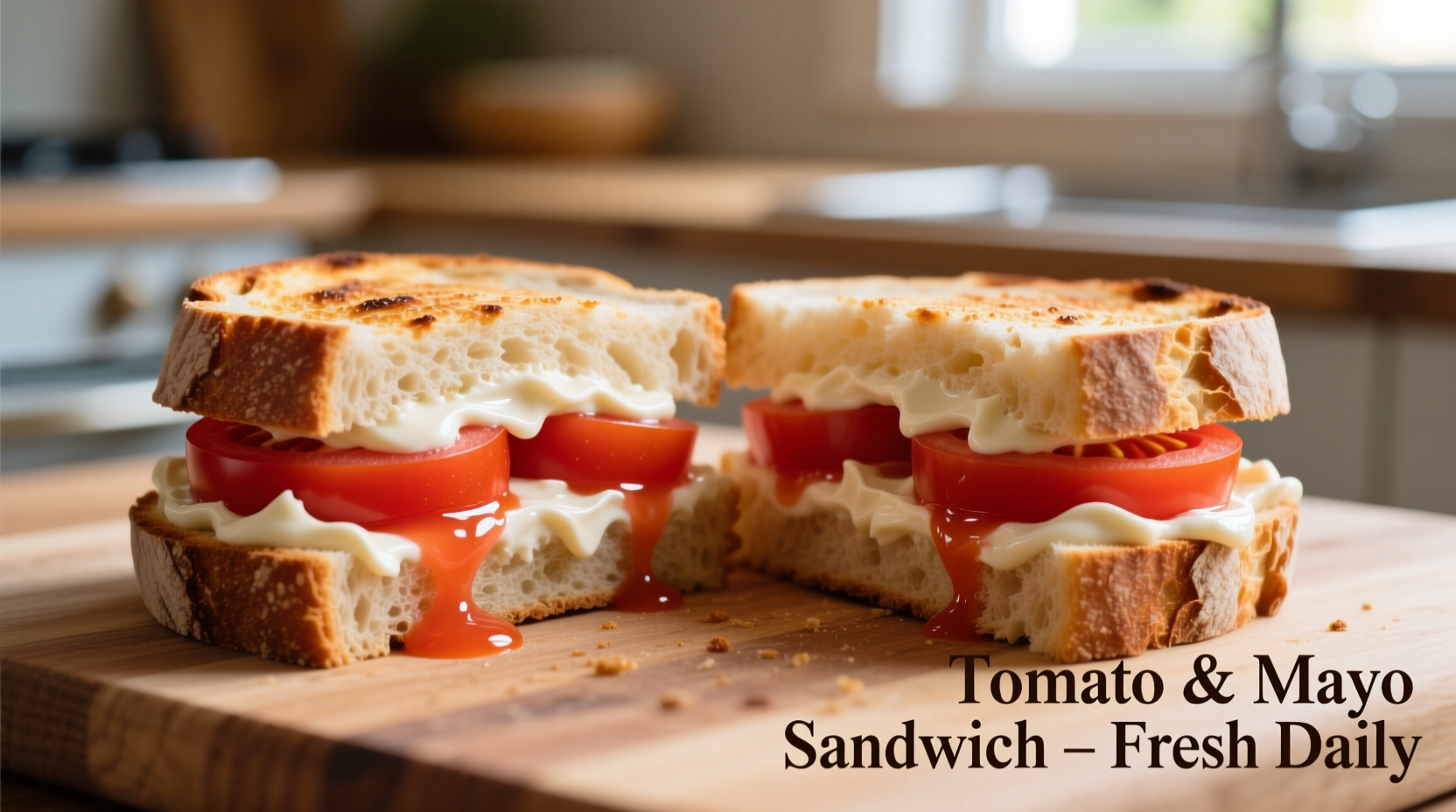A tomato and mayo sandwich represents culinary minimalism at its finest—just three core ingredients transformed into something greater than the sum of its parts. This humble combination has sustained generations of workers, students, and home cooks precisely because it works: the acidity of ripe tomatoes cuts through the richness of mayonnaise, while quality bread provides structure and textural contrast. What many consider a 'throw-together' meal actually follows specific food science principles that determine whether your sandwich will be soggy disappointment or lunchtime perfection.
The Science Behind This Simple Classic
Understanding why tomato and mayo create such a satisfying combination begins with food chemistry. Tomatoes contain malic and citric acids that interact with the emulsified fats in mayonnaise, creating a balanced flavor profile that neither overwhelms nor underwhelms the palate. According to research from the USDA Agricultural Research Service, the optimal ripeness for sandwich tomatoes occurs when lycopene and beta-carotene levels peak, typically 3-5 days after harvest at room temperature.
| Tomato Ripeness Stage | Texture | Flavor Profile | Best For Sandwiches? |
|---|---|---|---|
| Vine-ripened (fully red) | Firm but yielding | Balanced sweet-tart | ✓ Ideal |
| Pink stage | Firm | Mild, slightly acidic | ✓ Good (continue ripening) |
| Overripe | Very soft | Intensely sweet | ✗ Causes sogginess |
Building Your Perfect Tomato Mayo Sandwich: A Step-by-Step Guide
Ingredient Selection Essentials
The quality of your three core ingredients determines 90% of your sandwich's success. For tomatoes, choose varieties with firm flesh and lower water content like 'Better Boy', 'Celebrity', or 'Roma'. University of California agricultural studies show these varieties maintain structural integrity better than heirloom types when sliced for sandwiches. When selecting mayonnaise, opt for full-fat versions with simple ingredients—just oil, egg yolks, vinegar, and salt. The emulsion stability in quality mayonnaise prevents separation and sogginess.
Preparation Technique Matters Most
Follow this professional chef technique to avoid the #1 sandwich failure: sogginess. First, toast your bread lightly to create a moisture barrier. Next, spread mayonnaise on both slices—not just one—as this creates dual protective layers. Season the tomato slices with flaky sea salt just before assembly to draw out excess moisture without compromising texture. Stack ingredients in this order: bottom bread → mayo → tomato → optional additions → mayo → top bread.

Timing Is Everything
Food safety experts from the FDA Food Code recommend assembling tomato sandwiches immediately before eating. The combination of acidic tomatoes and mayonnaise creates ideal conditions for bacterial growth when left at room temperature for more than two hours. For meal prep, store components separately and assemble within 15 minutes of consumption.
Proven Variations That Elevate This Classic
While purists argue that additions compromise the sandwich's elegance, certain enhancements have stood the test of culinary time. Consider these evidence-based upgrades:
- Black pepper boost: Freshly cracked pepper enhances tomato's natural sweetness through synergistic flavor compounds
- Thin bacon layer: Provides textural contrast and umami that complements both ingredients
- Herb-infused mayo: A pinch of fresh basil or chives in the mayonnaise bridges tomato's vegetal notes
- Cucumber addition: For hot weather, thin cucumber slices add refreshing crunch without sogginess
Regional Twists on a Global Favorite
What Americans call a 'tomato mayo sandwich' appears worldwide with regional adaptations. In the UK, it's commonly served on malt loaf with HP sauce. Japan's version often includes kewpie mayonnaise and shiso leaf. Southern US variations frequently incorporate pimento cheese spread. Culinary anthropologists at Smithsonian Magazine trace this sandwich's evolution to early 20th century American lunch counters, where mayonnaise became widely available following commercial production advances in the 1910s.
Serving and Storage Guidelines
For optimal enjoyment, consume immediately after assembly. If you must prepare ahead, pack components separately and include a paper towel in the container to absorb excess moisture. Never refrigerate assembled sandwiches—cold temperatures accelerate staling in bread and cause tomatoes to lose texture. Leftover tomato slices maintain quality for 24 hours when stored stem-side down on a paper towel in a covered container.
Troubleshooting Common Problems
Soggy bottom bread? You likely didn't apply enough mayonnaise as a moisture barrier or sliced tomatoes too thick. Bland flavor? Your tomatoes may have been underripe or refrigerated (which destroys flavor compounds). Mayonnaise sliding out? Use artisan bread with more texture rather than ultra-smooth sandwich bread.











 浙公网安备
33010002000092号
浙公网安备
33010002000092号 浙B2-20120091-4
浙B2-20120091-4